It’s time to reconsider how you use Instagram’s advertising tools for your business. With the platform’s continuing development, new ad placements and algorithm changes, the creatives, captions and CTA that worked in the past might not deliver the same CPC, reach and engagement in the near future.
Brands are growing concerned about where to spend their main social media marketing budgets. Over 50% of social media marketing budgets are spent inefficiently because of poor creatives, mixed messaging, limited ad types and unfortunate ad captions.
With this article, I want to explore how we optimized ad strategies on Instagram for GLAM LAB London, which allows freelance beauty professionals in the U.K. to register and list their services, which clients can book. The purpose of the marketing campaign on Instagram was to raise awareness about the service and generate leads.
Test 1
Image or video ad creatives?
At first, I was hesitant about testing image ads just to see how they performed and comparing them with the performance of our video ads.
Quick research showed that video ads generate three times more engagement than other formats. I still ran a quick campaign for a couple of days with an image ad, among other formats, and found that Instagram’s algorithms were reluctant to push image ads:

Image Credits: GLAMLAB
I therefore decided to instead use video ads. I started with two video creatives that went viral on Instagram Reels (generating 21,000 and 5,000 views) to test the algorithms and targets. We ran one six-second video of a girl that first showed her without any makeup and then transitioned to her post-makeup to music, and a 13-second video showing a client struggling with makeup and ordering our service in the end.
I used a general ad description with a CTA to book the service on our website, targeting a generic audience — women from London, aged 18-55. I chose all three Instagram ad placements (Reels, Stories and Feed Posts) and the average results were:
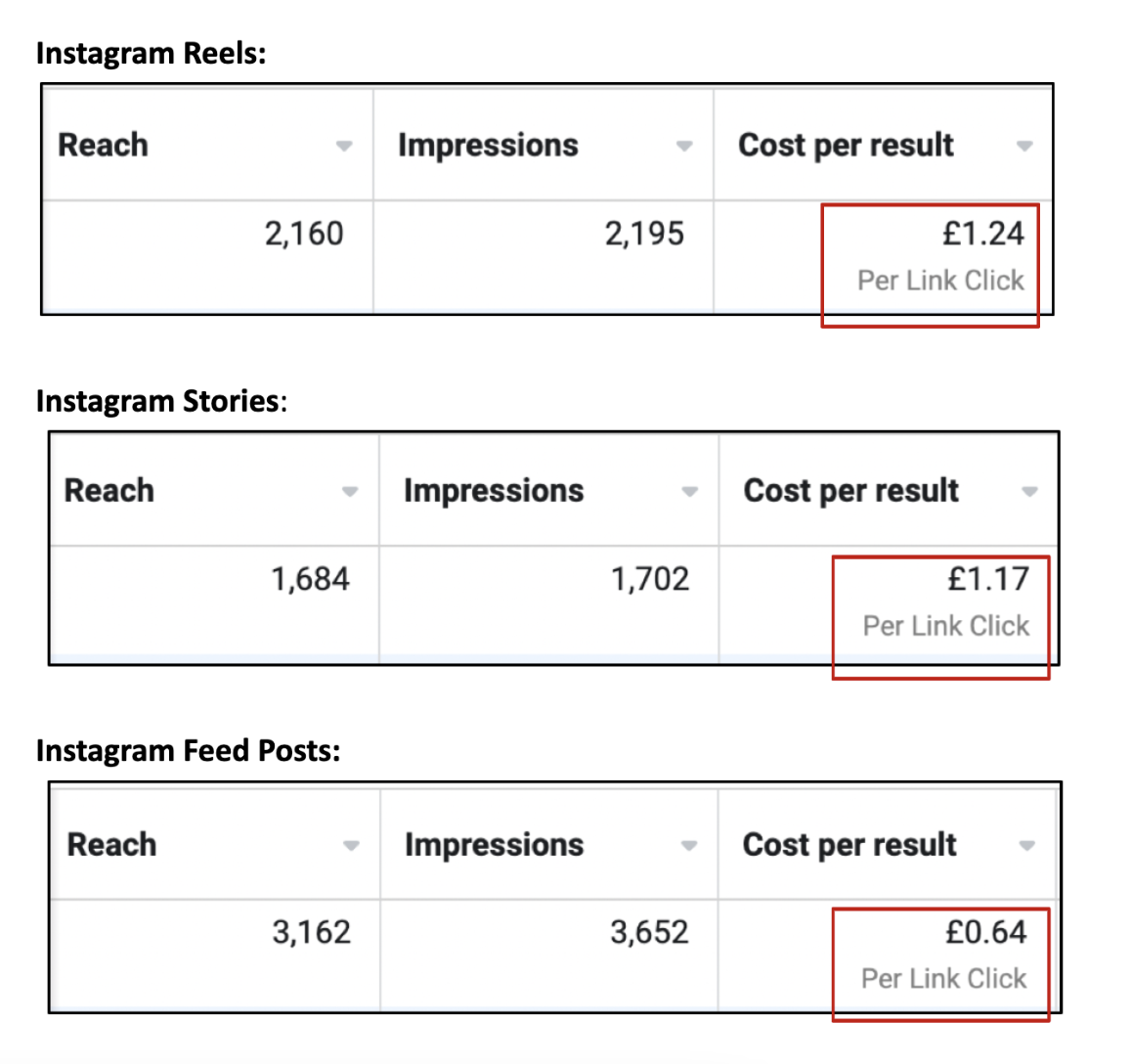
Image Credits: GLAMLAB
I had already heard that Instagram Reels could be more expensive than other placements but didn’t expect such a big difference. The same creatives can perform at almost half the cost if used on different ad placements.
Test 2
Optimizing creatives
The next step was to optimize our creatives. The six-second video generated 85% of all clicks, so I decided to go ahead and optimize it. I created a TikTok voice-over with our USP and added it to the video along with subtitles. Since about 40% of users mute audio on Instagram, I added subtitles to ensure the ad message reached everyone.
Note that I didn’t use any professional editing software and neither do I have any video editing skills. TikTok’s “text-to-speech” feature helped to convert text into their voice-over, and I used the free tier of the VN Video Editor app to further edit and balance the voice-over and background music with a few clicks.
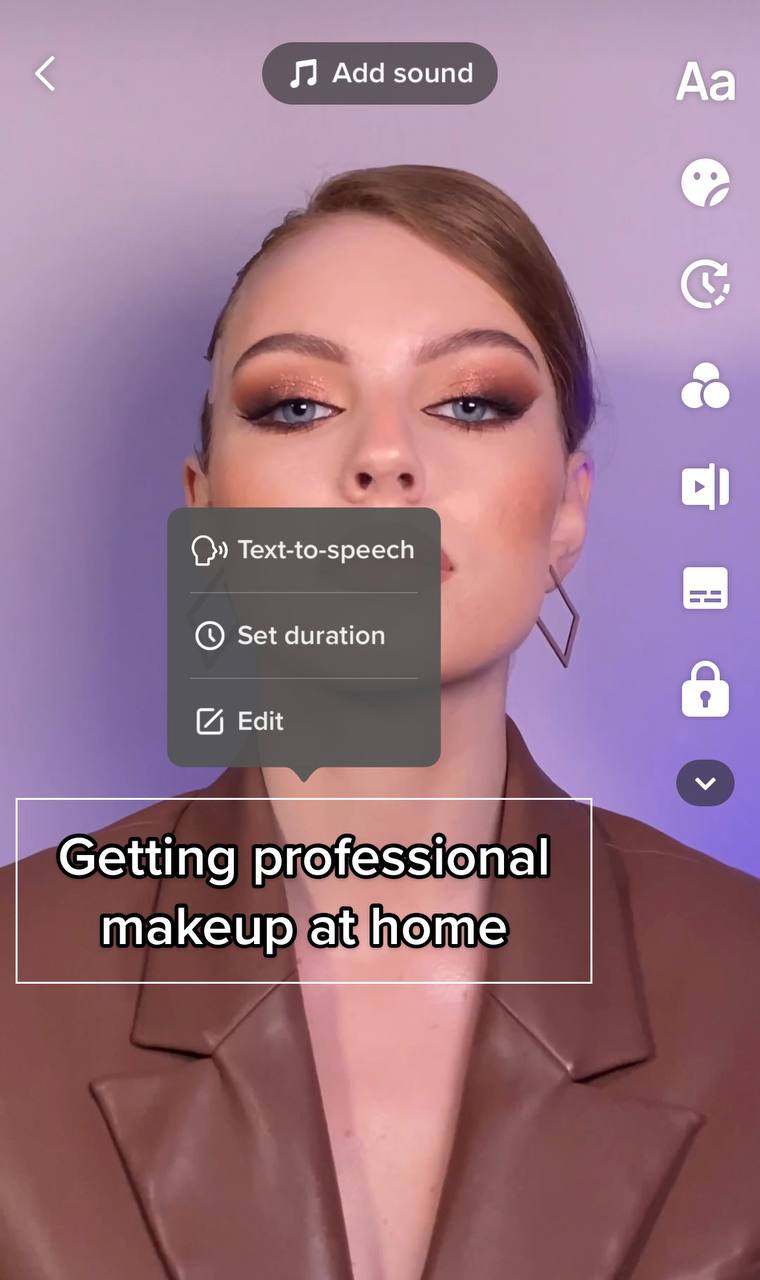
Image Credits: GLAMLAB
When adding the subtitles, I was mindful of the ads’ interface. It’s important to preview ad creatives before publishing them to ensure that the subtitle text is visible and not obscured by Instagram ad components (buttons and CTA messages), especially for Stories and Reels:
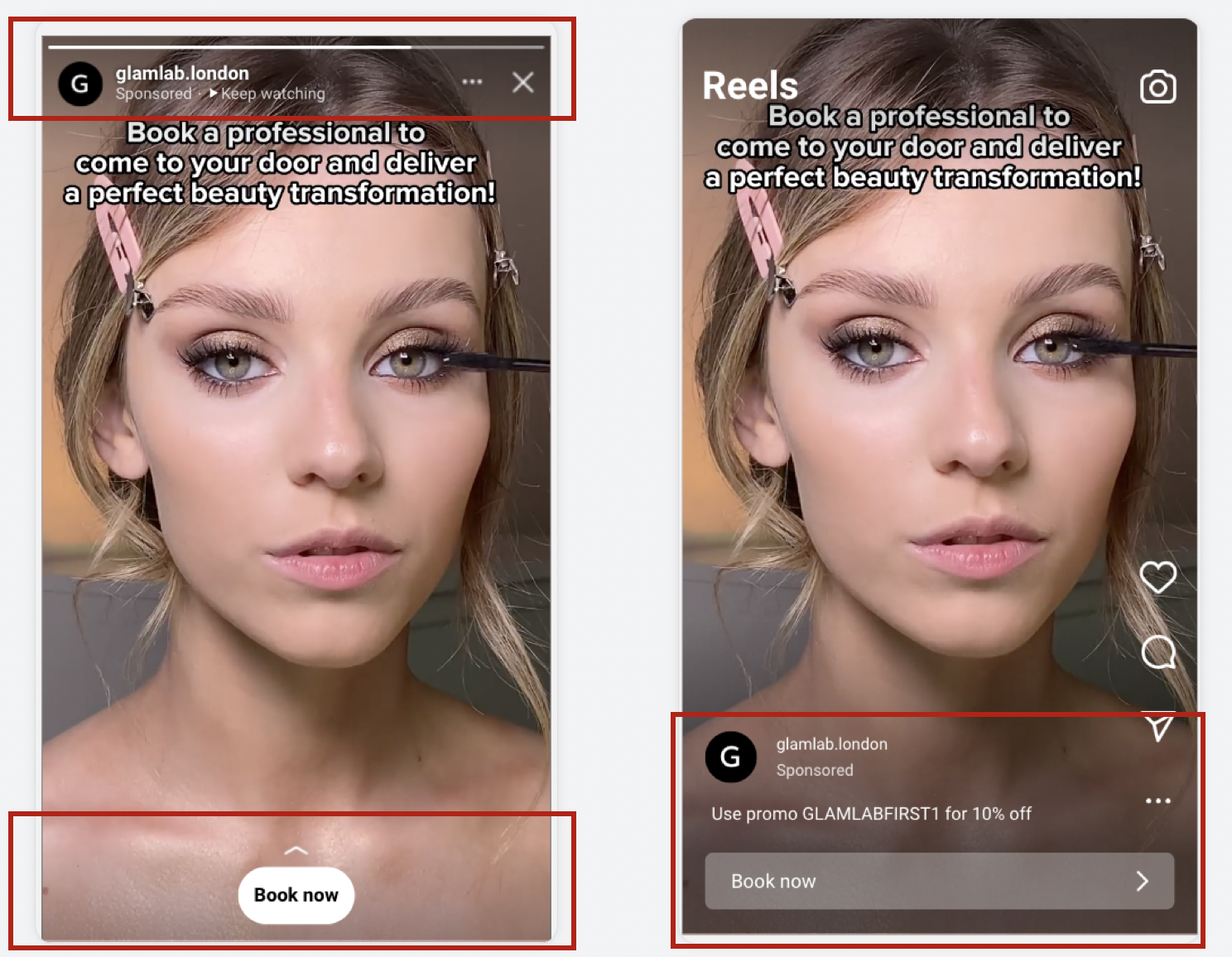
Image Credits: GLAMLAB
Target optimization
Our first test showed people aged 25 to 44 were more likely to click on our ads, so I set Instagram to target that age group. In addition, I added interests relevant to our industry: Beauty, Fashion, Photography and Skincare.
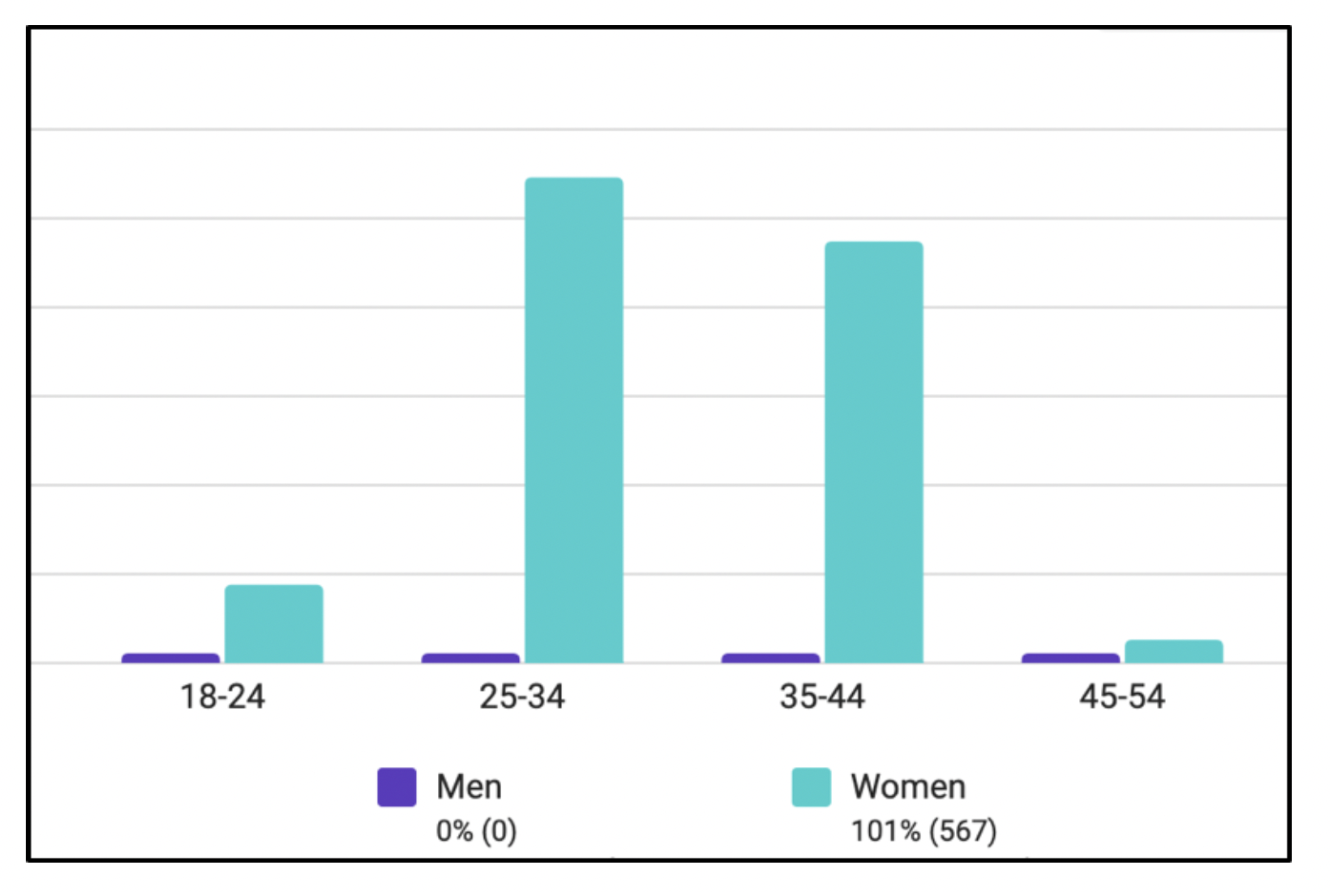
Image Credits: GLAMLAB
Since Reels and Stories showed almost the same CPC results, I decided to run them in the same ad set. After optimizing our creatives and targets, we got better results than with our first test: The cost of click on Reels and Stories fell by £0.3 on average, while the cost of click on Feed Posts was lowered by £0.18:
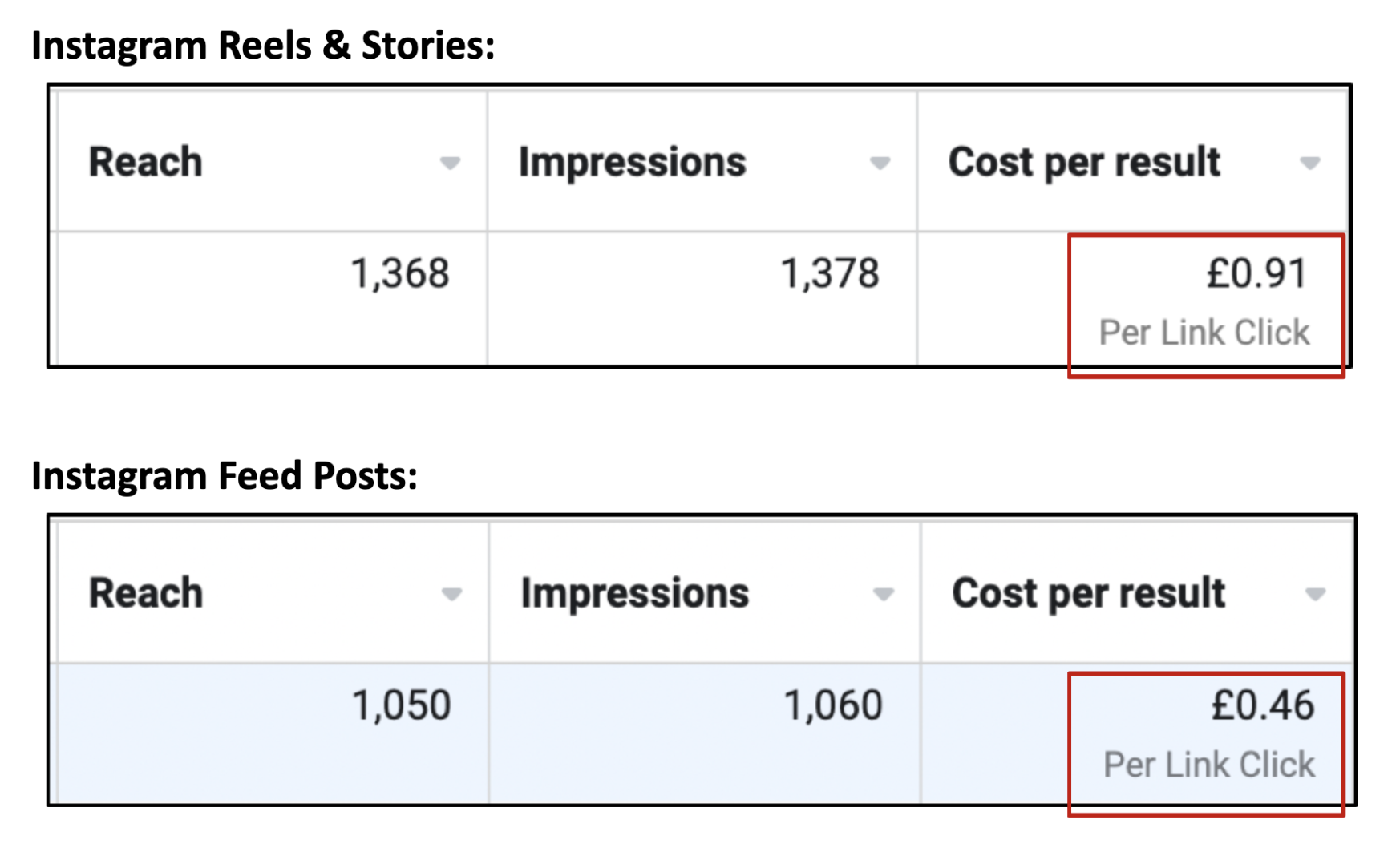
Image Credits: GLAMLAB
Test 3
Optimizing ad descriptions and CTA
I further enhanced our ads by adding “magical” keywords into the ad description that were displayed as captions. These included “Christmas party,” “Black Friday” and a time-sensitive 10% off discount code to create a sense of urgency.
In addition, I changed the CTA button from “Book now” to “Learn more” to make the ads look more native and less like direct advertising. These changes helped further reduce CPC by £0.37 on Reels and Stories and by £0.32 on Feed Posts.
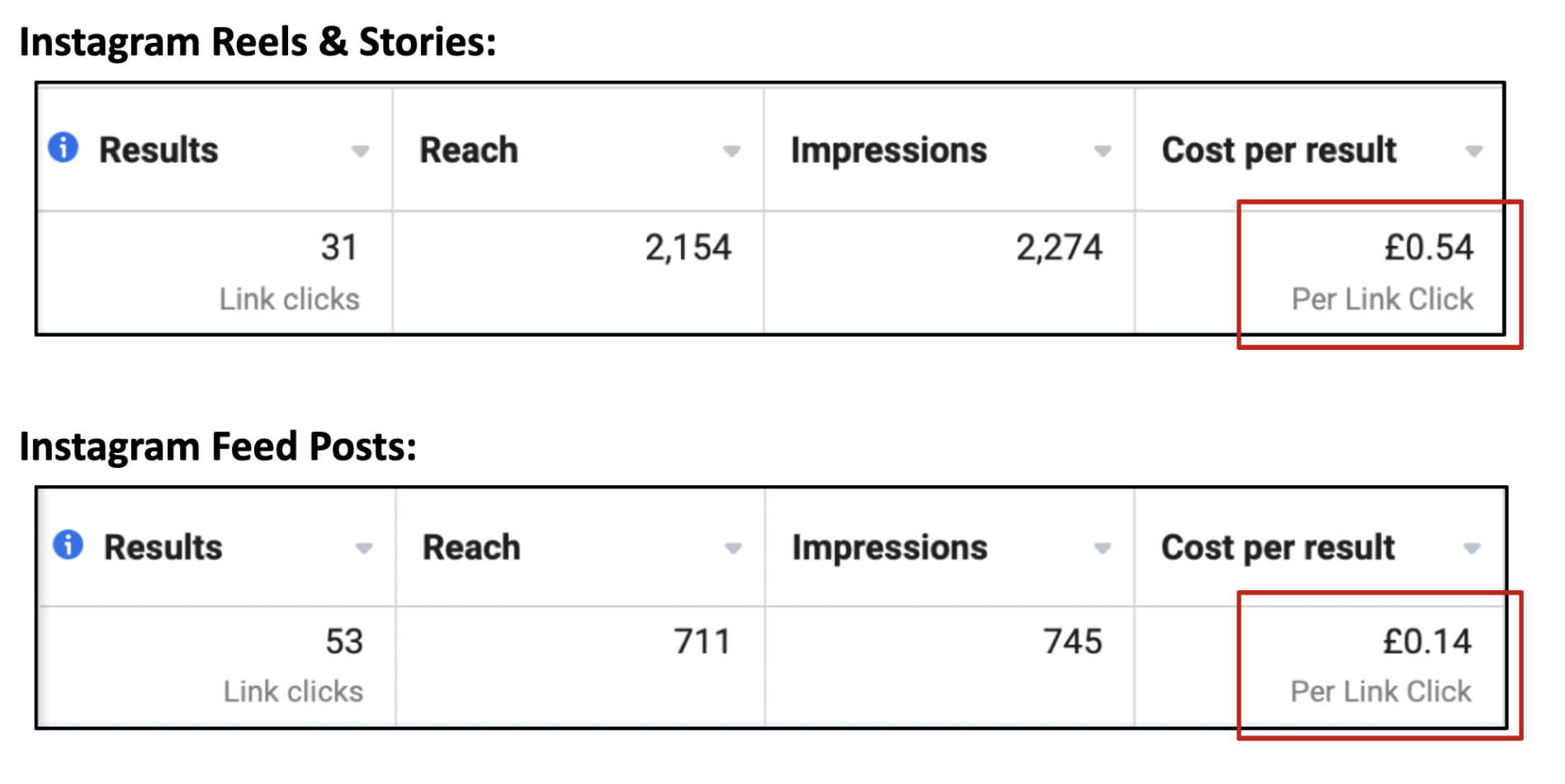
Image Credits: GLAMLAB
These were the average weekly results after we optimized the ad description and CTA for our third test:
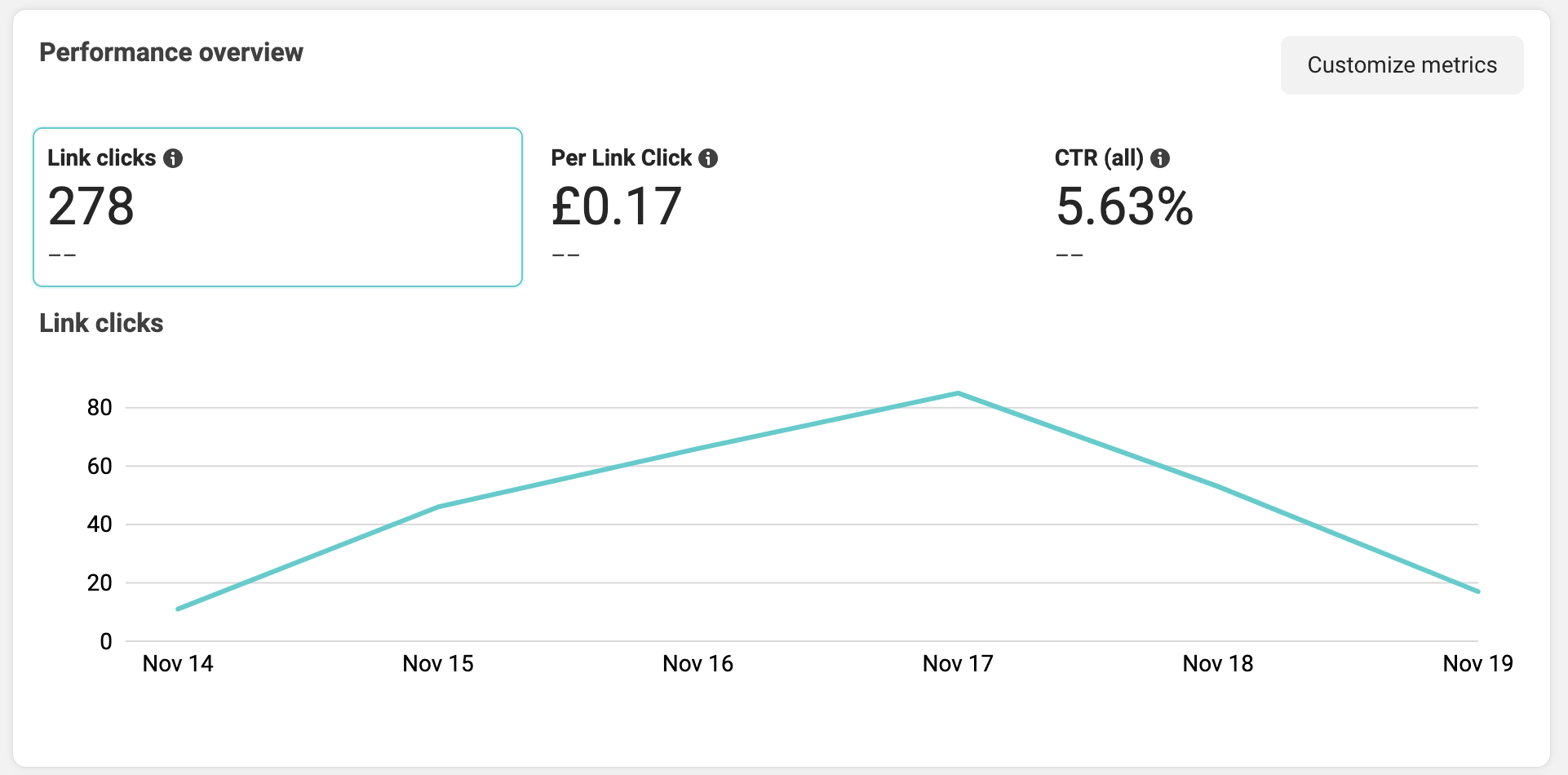
Image Credits: GLAMLAB
The results show that placing ads on Instagram Feed turned out not only to be cheaper per click than Instagram Reels and Stories, they also had a significantly higher conversion rate from Impressions to link clicks: 7.1% for Feed Posts versus 1.2% for Reels and Stories.
Marketers often wonder whether it is worth it to place their ads on the Feed since other Reels and Stories seem more trendy and interactive. My recommendation: Definitely!
First of all, it’s important to test your ads’ performance everywhere, because you never know where it will work best. Secondly, as we’ve seen, Post ad placement turned out to be almost four times cheaper than Reels and Stories.
Wrapping up
Instagram is a great marketing platform for raising awareness about your product, growing your brand, finding new customers and reconnecting with old ones. Instagram has various tools, ad placements and target audience settings.
We advise sticking to video creatives over images regardless of what ad placement you choose. Definitely don’t chase trends. Just because Reels ads were launched recently and everyone started placing their ads there doesn’t mean it’s the most effective and cost-efficient ad placement. Diversify your ad strategy, test different ideas and don’t give up if your ad doesn’t show results right away.
